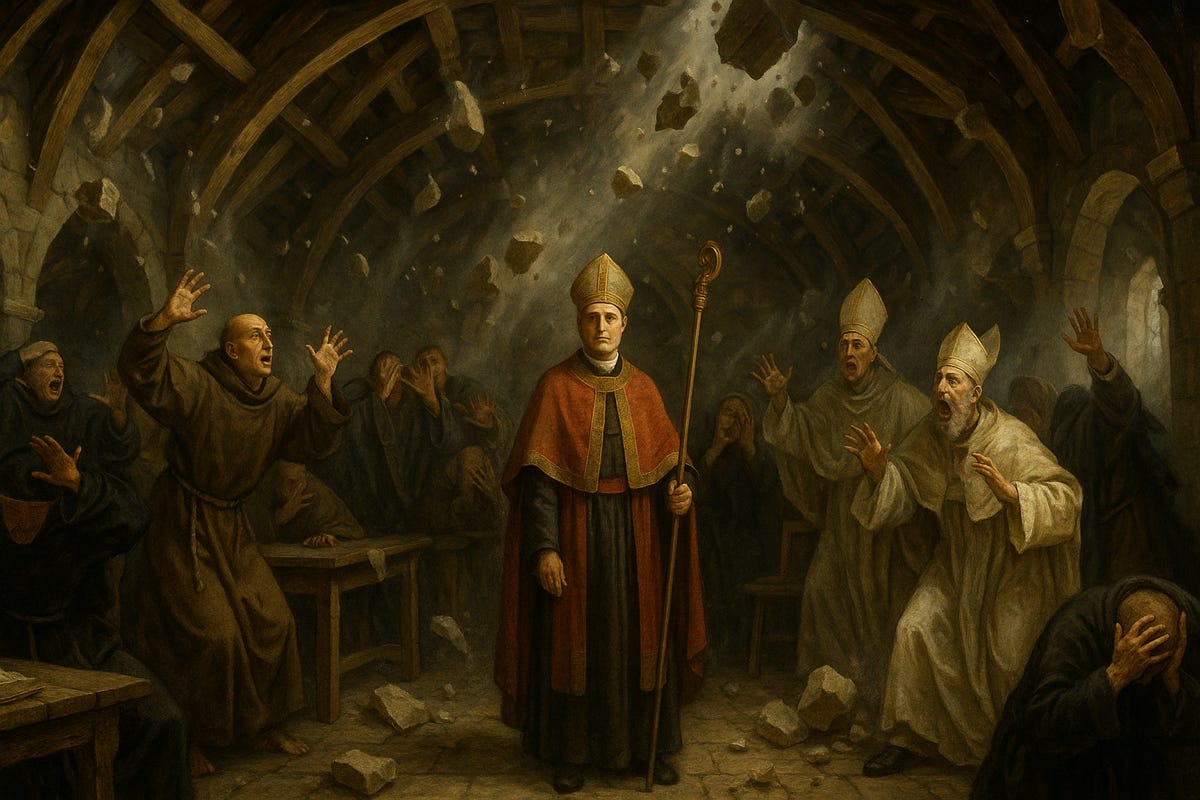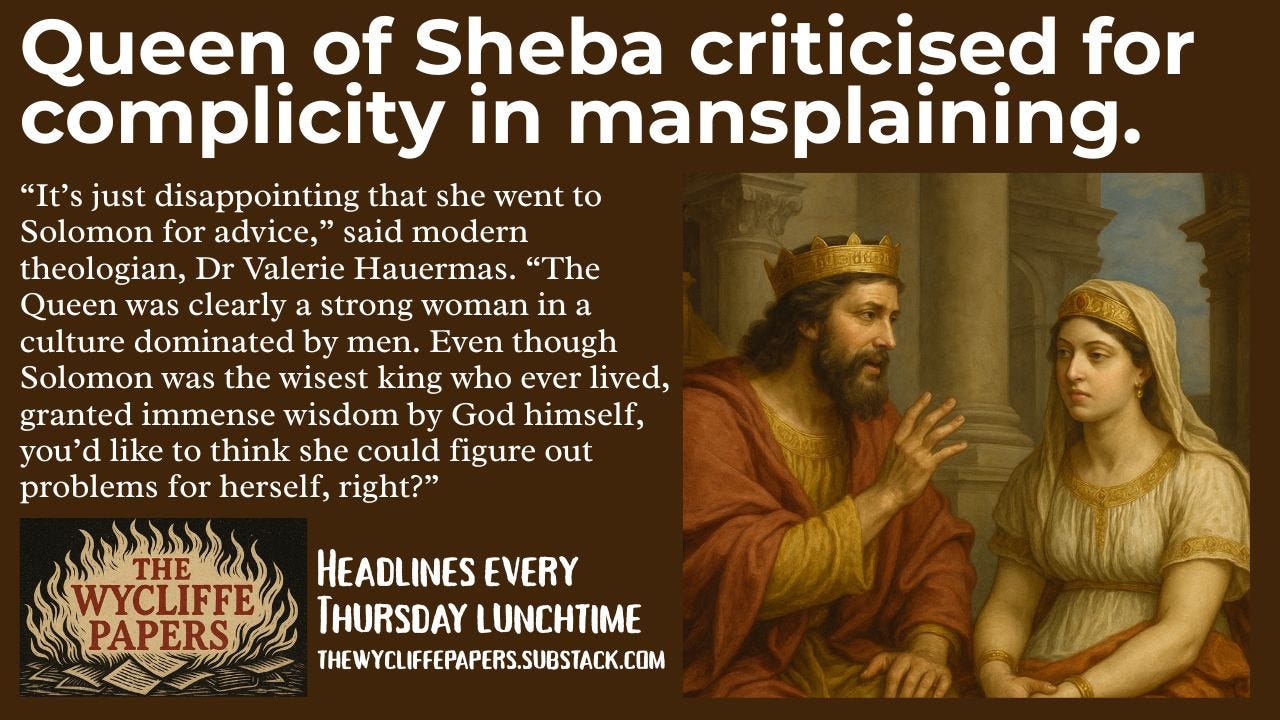Apologies for the lack of last Friday’s instalment of Cary’s Almanac. The Keswick Unconventional ended up taking up too much of my time. But now I think we’re back to normal.
Before that, here’s a question: would you like to read an advanced copy of my next book, A Psalm Psupplement? It’s forty reflections on Psalms. It should be going to press later this month, and some extra eyes on it would be good. If that’s of interest, ‘reply to’ this email and I’ll add you to the list of advanced reader.
You can ‘reply to’ this email because you’re a subscriber, right? No? What? Why not? It’s free. And in your in-box every Friday (except last Friday…)
On 8th August, the Church of England remembers Dominic, a Spanish priest from Castile who founded the Order of the Preachers.
As you may have noticed, Cary’s Almanac focuses on the story of England, so will not delve into the details of the man canonised soon after his death in 1221 having lived almost exactly 50 years. Instead, we will look at his legacy which can still be seen all over historic cities of England. That is because Dominic founded an order of mendicant monks that could be recognised straight away by their black copes. The Dominicans became known as ‘Black Friars’.
Dominicans are not monks who live a cloistered life of prayerful separation from the world, keeping bees and copying out manuscripts. They are friars who are out on the streets, preaching the word and combatting heresy. Dominicans in particularly were theological shock troops. Franciscans were to be found out in the streets and lanes with the common people, living a life of poverty, Dominicans gravitated towards town squares and universities.
Dominic founded The Order of the Preachers in Toulouse in 1215. He had originally set up a house under the Benedictine Rule but wished to emphasise preaching and study over traditional monastic seclusion. So Dominic went to Rome to seek approval for a new order of preachers from Pope Honorius III. The Pope was all in favour and liked the requirement for friars to study scripture and theology in order to prepare for cross-examining and correcting heretics. With Papal backing, Dominican houses were quickly established in university centres like Paris and Bologna.
Oxford soon followed. And then Cambridge. Dominicans reached England in 1221, led by Gilbert de Fresney, just six years after the movement’s inception. Within a few decades, dozens of friaries had been established in influential cities and towns like London, York, Bristol, Exeter, Lincoln, Chester and Norwich.
This is why a synod met at a newly erected home for the Blackfriars just south of the Ludgate, near St Pauls in London on 21st May 1382.
Fever Pitch
The meeting had been convened by William Courtenay, Archbishop of Canterbury, in an atmosphere that could be described as feverish (although that might have just been fever). The year before had seen a large-scale rebellion known as The Peasants’ Revolt. It is not a good name for this uprising which would have been easy enough to crush had it been just lightly armed peasants. It was a rebellion of the struggling middling sort too.
The Peasants’ Revolt had become so brutal that Courtenay’s predecessor, Archbishop Simon Sudbury, had been dragged out of St John’s Chapel in the Tower of London and beheaded by eight men with swords. (His head can be found on display at St George’s Church, Sudbury, Suffolk.)
The elites were looking for reasons for this social unrest, or people to blame. With hindsight, we can probably see that England had not yet come to terms with the devastation of the Black Death. Labour was not much more expensive and food was scarce thanks to a significantly colder climate signalling the end of The Medieval Warm Period. And the elephant in the room was a hopelessly vain king, Richard II, and another expensive foreign war. But demographic changes, cultural shifts and environmental trends don’t give you a convenient scapegoat. Someone must be blamed. And it cannot be the king. A scapegoat must be found. That man was John Wycliffe.
The Scapegoat
Wycliffe, formerly an Oxford academic, had been teaching that the head of the church was not the pope but Christ and that Scripture alone should be our authority. Wycliffe also criticised the sale of indulgences – time off the fires of Purgatory in exchange for penance or money – and warned against superstitious practices associated with the Mass. He influenced Jan Huss who, in turn, influenced Martin Luther and has thus been dubbed ‘The Morning Star of the Reformation’.
The writings of Wycliffe had already been condemned at a similar meeting in St Paul’s Cathedral five years earlier, but in that time, everything had changed. Another show trial was needed. And where better to hold it than a centre of white-hot orthodoxy? The home of The Black Friars. Fifteen such friars were joined by eight bishops, fourteen theologians and four other assorted monks.
The only person missing was Wycliffe. It’s not clear whether he was invited or had been excused on the grounds of ill health. Wycliffe, having a stroke, died two and half years later in his parish in Lutterworth. Either way, there is no reason to let these minor details get in the way of good theological lynching.
But something else did: an earthquake.
The Earthquake
Just after lunch, an earthquake shook the building vigorously. Masonry began to fall. It all felt ominous. Was this the judgment of the Lord himself on an errant church looking in the wrong place for someone to blame for the ills of society? Was God angry at a corrupt and complacent church?
No. Of course, not. Archbishop William Courtenay apparently said,
“This earthquake foretells the purging of this kingdom from heresies, for as there are shut up in the bowels of the earth many noxious spirits which are expelled in an earthquake, and so the earth is cleansed but not without great violence, so there are many heresies shut up in the hearts of reprobate men, but by the condemnation of them, the kingdom is to be cleansed; but not without trouble and great commotion.”
So, this wasn’t a bad earthquake. It was a good earthquake.
The trial continued. Wycliffe was condemned. Again.
Fortunately for him, heresy was not yet a capital offence. That would come in 1401 with a change in the law brought about by another rebellion.
Wycliffe was specific in his condemnation of the Dominicans and other ‘mendicant’ orders – that is, the monks who go out into the world to preach and minister, rather than staying in monasteries to reflect and pray. But there is also criticism of these friars in The Canterbury Tales and Piers Plowman. These travelling monks were accused of changing their words to flatter the wealthy, excuse the sins of the powerful and work their way into the homes of widows.
This is not a uniquely medieval problem. It an ancient one too. Jesus and the apostles teach about such temptations, and issue dire warnings to those who succumb to them. And it is a modern problem too.
The established Church of England has a unique position in the life of the nation, but any pastor of any congregation has influence both on their own flock and the surrounding community. Will current and future church leaders speak deeply inconvenient words of challenge for both the secular leaders? And the people? Or will they – or we – be those who interpret an earthquake as a green light to ‘keep doing what you’re doing.’?
Found that interesting? Subscribed? No? Why not? It’s free and (almost) every Friday:
Speaking of Wycliffe, here’s the latest from The Wycliffe Papers, jokes for those serious about the Bible:
You could even support me by becoming a paid subscriber, known as a Loyal Lollard. Head on over to The Wycliffe Papers here:





